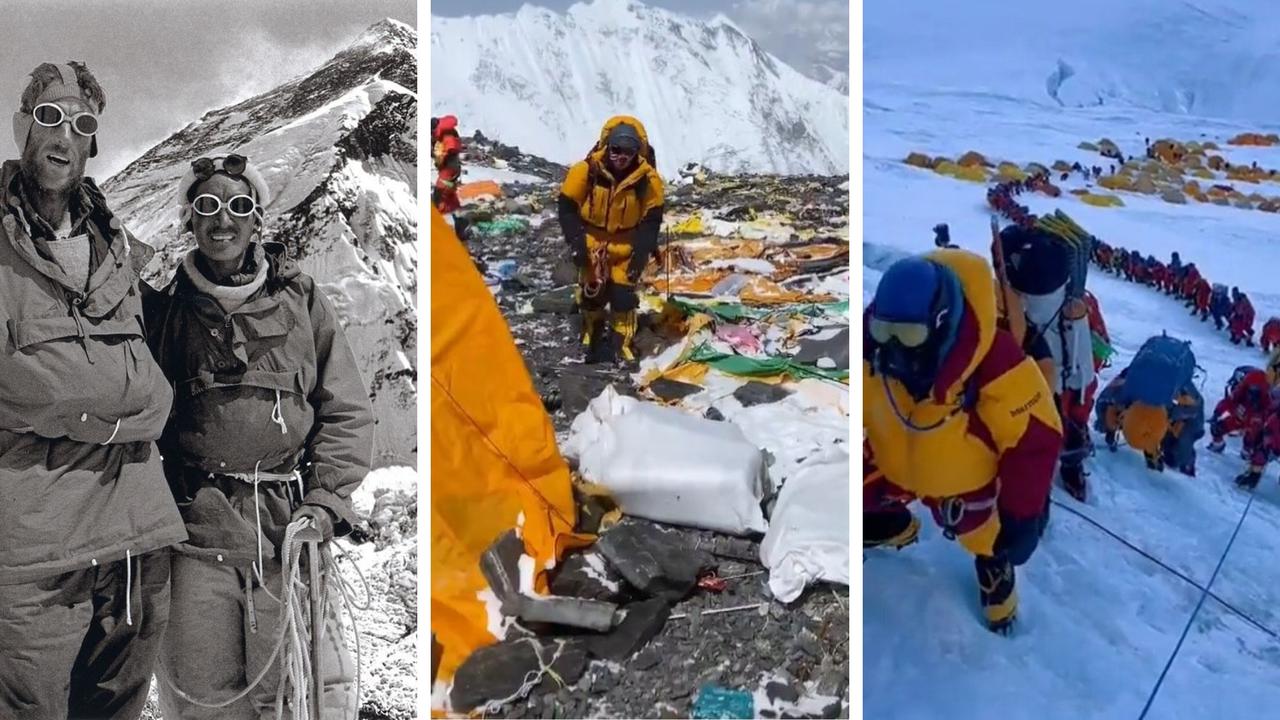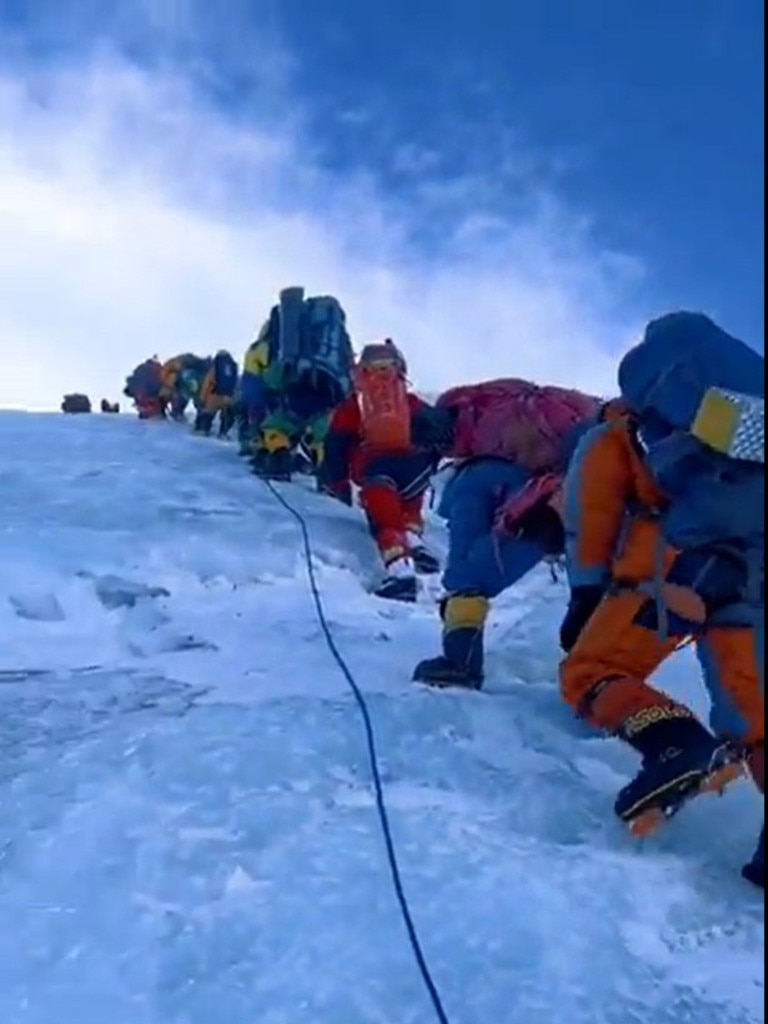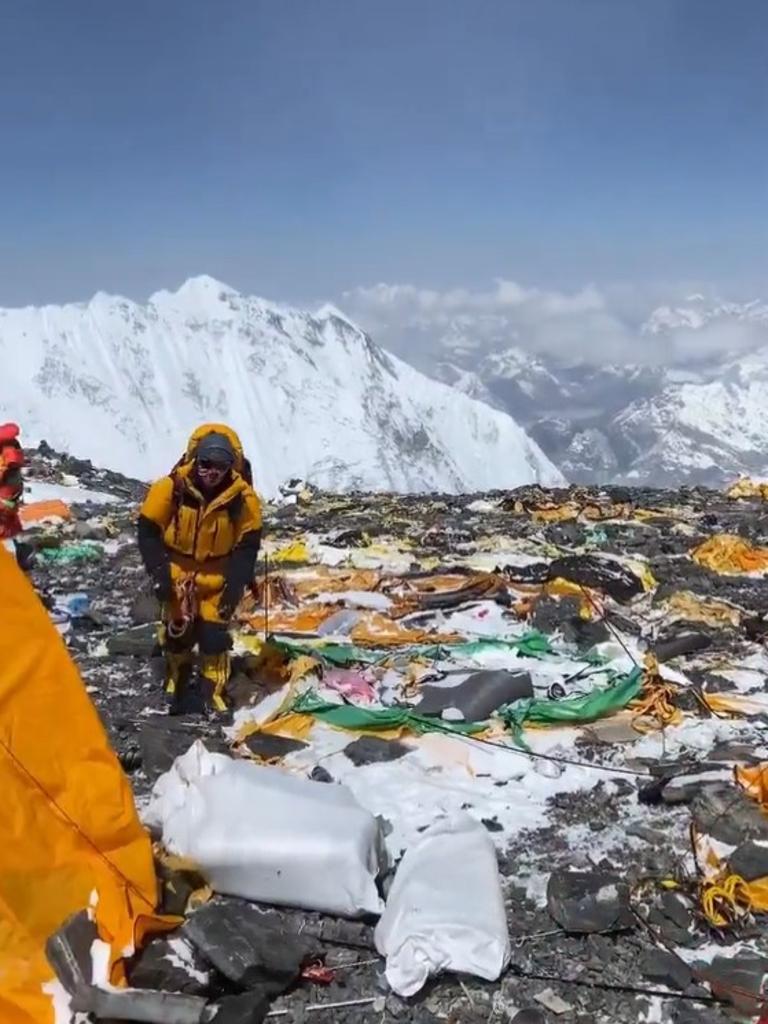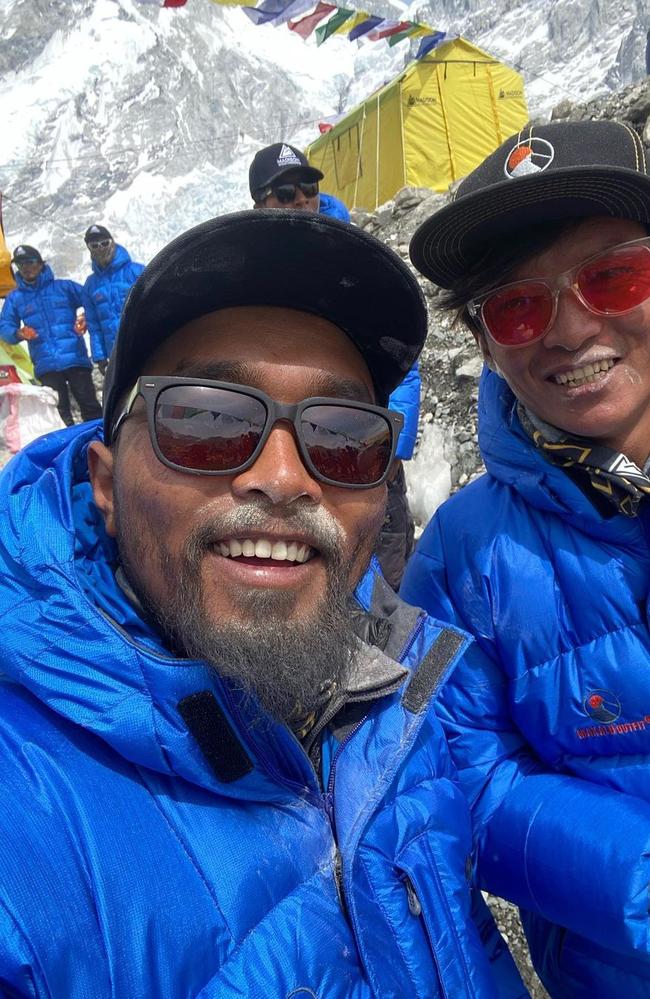Then and now: Concern over Everest trend as 20 years’ worth of climbers summit in one season
Mt Everest looks vastly different 70 years on from its first summit as climate change, social media, and tonnes of rubbish change the face of the formidable peak.

Seventy years have passed since New Zealander Edmund Hillary and Nepali Tenzing Norgay Sherpa made history by becoming the first humans to summit Mount Everest on May 29, 1953.
This British expedition catapulted the two men into the global spotlight and forever transformed the world of mountaineering.

Today, hundreds of climbers attempt to conquer the 8849m (29,032-foot) peak each year, but this influx of adventurers has brought with it pollution and overcrowding, tarnishing the once pristine mountain.
Back in 1953, the successful expedition marked the culmination of nine attempts to reach the summit. It took an arduous 20 years for the first 600 individuals to conquer Everest. However, times have changed dramatically.
Now, it is not uncommon for that number to be achieved in a single climbing season, as growing queues of climbers, supported by experienced guides and commercial expedition companies, vie for their chance to stand atop the world’s highest peak.


The journey to Everest’s base camp, which once took months, has been drastically reduced to a mere eight days with the establishment of a small mountain airstrip in the town of Lukla in 1964, serving as the gateway to the Everest region.
Technological advancements have also played a role in facilitating climbers’ endeavours.
Gear has become lighter, oxygen supplies more readily available, and tracking devices have enhanced expedition safety.
Modern climbers even have the luxury of summoning a helicopter at lower altitudes in case of emergencies.

Every climbing season, skilled Nepali guides meticulously set the route all the way to the summit, leading paying clients in their footsteps.
While some may argue that mountaineering has evolved significantly since Hillary and Norgay’s pioneering expedition, Billi Bierling of the Himalayan Database disagrees.
According to Bierling, “they didn’t go to the mountains much different than we do now. The Sherpas carried everything. The expedition style itself hasn’t changed.”
Melting Point: Climate change threatens Everest
As global temperatures continue to rise, Everest has not been immune to the effects of climate change.
Warming temperatures have caused crevasses on the mountain to widen, and previously snow-covered slopes are now home to running water.
A 2018 study conducted on Everest’s Khumbu glacier revealed its vulnerability to even minor atmospheric warming, with the temperature of shallow ice already nearing the “melting point”.
“The future of the Khumbu icefall is bleak,” warns Duncan Quincey, the principal investigator and glaciologist involved in the study.

The most noticeable change is the presence of meltwater on the surface of the glaciers.
Tragically, this year witnessed the loss of three Nepali guides who were swept into a deep crevasse by a falling chunk of glacial ice.
Social media shines light on Everest’s trials and triumphs
In today’s digital age, the climbing season on Everest unfolds on social media platforms, where enthusiastic mountaineers and, increasingly, Sherpas document their journeys.
With the use of hashtags, climbers keep their sponsors satisfied while their posts catch the attention of potential funders.
Moreover, the climbing community has embraced the cause of promoting eco-friendly practices at their camps, such as the use of solar power.


However, Sherpas, who have become tech-savvy themselves, are using social media to shed light on abuses and advocate for change on the revered mountain.
Lakpa Dendi Sherpa, a seasoned Everest climber with 62,000 Instagram followers, remarks, “Everyone posts nowadays; it is part of how we share and build our profile.”
As Sherpas share in the promotional benefits of social media, others use their broad-reaching social media accounts to draw attention to the dire environmental situation.
Just last week, experienced guide Tenzi Sherpa took to Instagram to share footage of a litter-strewn Camp IV, expressing his sadness at witnessing such disregard for the mountain’s cleanliness.

Gelje Sherpa, another climber, captured global headlines recently when he heroically fashioned a human-size backpack to rescue a Malaysian climber from the treacherous “death zone.”
Gelje and his team transported the incapacitated climber to Camp III, where a helicopter flew him to safety.
This Nepali sherpa guide rescued a Malaysian climber from a part of Mount Everest called the ‘death zone' by carrying him down the hill on his back https://t.co/CLsYEDLw5Wpic.twitter.com/kjdxyj2IzS
— Reuters (@Reuters) June 1, 2023
Gelje emphasised to reporters the importance of saving lives over personal achievements, stating, “Saving one life is more important than praying at the monastery.”
Calls for Change and Clean-up
Tenzi Sherpa’s video resonated with climbers worldwide, prompting a wave of support and demands for action.
Everest Today, a publication dedicated to Everest news, labelled the accumulation of trash “disheartening” and called for strict penalties for climbers who litter.

They urged for urgent attention to be given to the issue, demanding stricter regulations, enforcement of clean climbing practices, and effective waste management strategies.
In recent years, various cleaning campaigns have been undertaken, but their effectiveness and available resources have varied greatly.
One of the most significant cleaning efforts was launched in 2019 and 2021 by Nepal’s Department of Tourism and the military.
Taking advantage of the tourism downturn caused by the Covid-19 pandemic, they collected 10 tons of garbage and retrieved the remains of four dead climbers from Camp 4.

Another notable initiative in 2019 was the Eco Everest project, spearheaded by Dawa Steven Sherpa and generously sponsored.
The team successfully removed two tons of garbage from Everest and other nearby peaks.
He noted that the wind had torn apart many tents, and little effort was being made to recover them or their contents.
“My Sherpas saw a bunch of tents [that] got ripped to shreds by the wind. It can be safely assumed that no efforts will be made to recover these destroyed tents and their contents,” he told adventure publication ExplorersWeb after the clean-up.
The future of Sherpas and mountaineering
Kami Rita Sherpa, who broke the record for the most Everest summits, has recently expressed his disheartenment, claiming there is “no future” for him in Nepal.
Sherpas, an ethnic group residing in the Everest region, have long been the backbone of mountain expeditions, performing crucial tasks such as fixing ropes, carrying loads, and cooking.
They can earn between $2500 and $16,500 or more, depending on experience, during a single expedition.

While hiring a Sherpa is not mandatory for Everest climbers, most opt for their services to increase their chances of reaching the summit.
Climbers are required to obtain life insurance for Sherpas, but the payout is a mere 1.5 million Nepali rupees (about $A17,422).
Sadly, three Sherpas lost their lives in April while crossing the perilous Khumbu Icefall.
Kami Rita voiced concern over the declining interest of the younger generation in climbing, as they seek better career opportunities abroad. He predicts a future with fewer Sherpas available to guide climbers, a trend that is already noticeable today.
“In 10-15 years there will be fewer Sherpas to guide climbers. Their number is already low now,” he recently told Reuters
A boon and a burden for Nepal
Mountain climbing and trekking in Nepal attract thousands of foreign visitors annually, contributing more than 4 per cent to the country’s $40 billion economy.
This year’s climbing season, coinciding with the 70th anniversary of the first summit, has will be a record-breaking one for both climbing numbers and fatalities.
Twelve people have lost their lives during Everest expeditions, and five others remain missing and are presumed dead.
Among the deceased was Australian climber Jason Bernard Kennison, who fell ill and became unresponsive at the summit.

In response to the mounting risks and challenges, the Nepalese government decided to halt the issuance of further Everest climbing permits this season after reaching a record total of 478.
With the inclusion of Sherpas, over 1,200 individuals aspired to reach the summit this spring.
The previous record, set in 2021, stood at 408 permits.
Nepal granted climbing permits for 27 peaks to climbers from 80 countries.
China had the largest representation, followed by the United States, India, Canada, and Russia.
Notably, 44 countries had three or fewer climbers in the Everest region.
While the revenue generated from climbing permits mostly remains in Kathmandu, the challenges posed by pollution, overcrowding, and climate change on Everest call for immediate attention.
– with AFP






